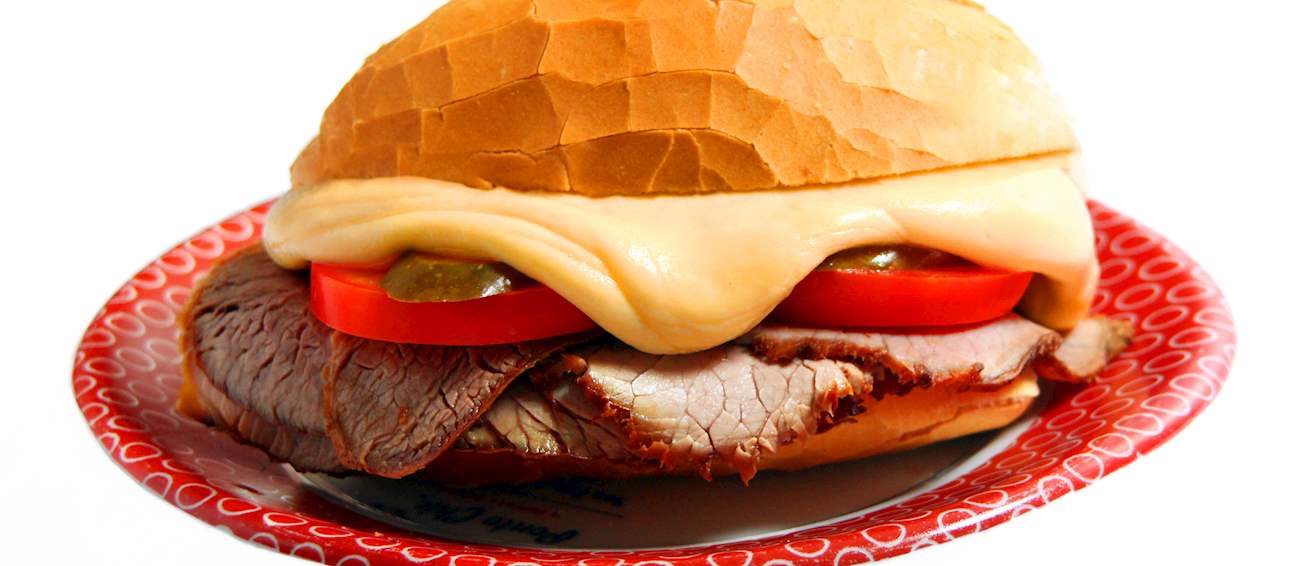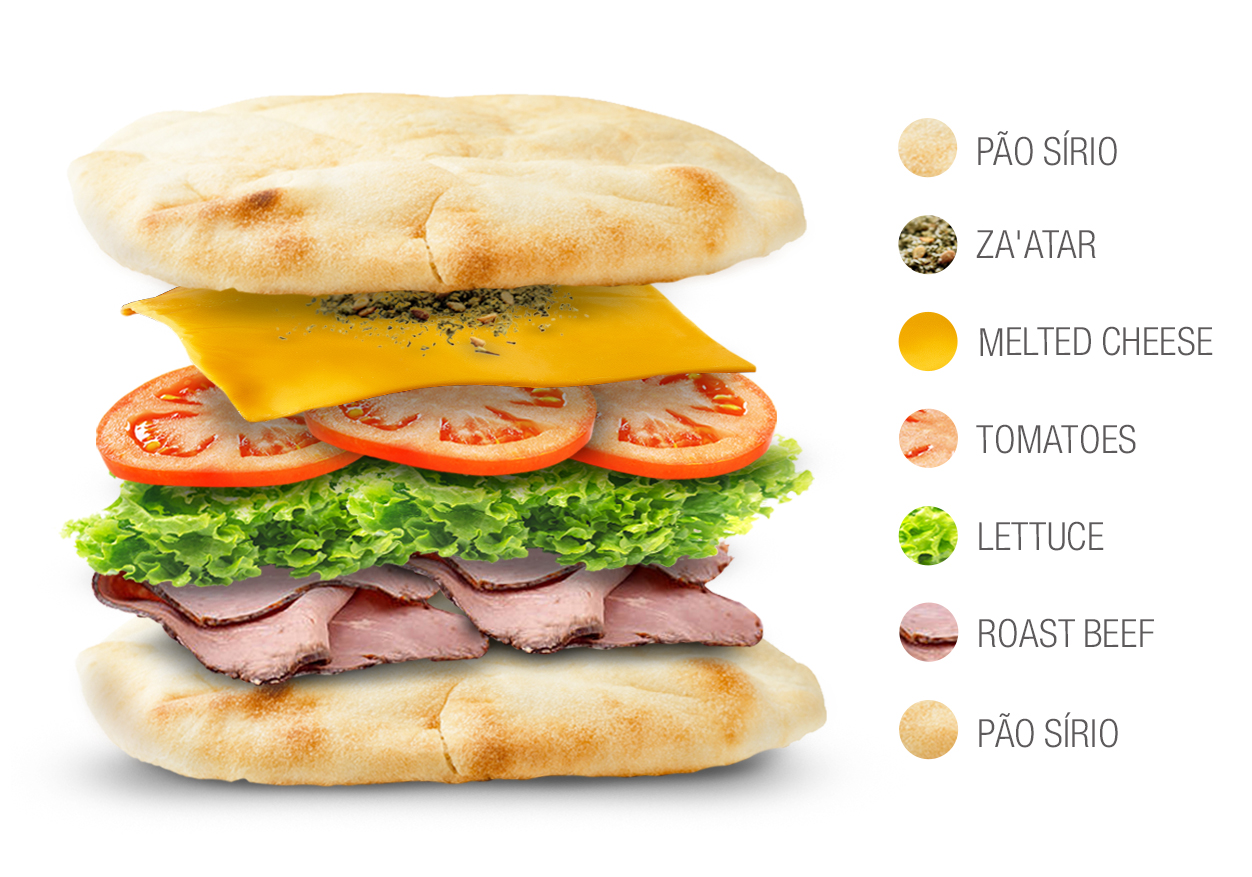Beirute is a Brazilian sandwich hailing from São Paulo. It's influenced by Levantine cuisine, hence the name that refers to the capital of Lebanon. Originally, the beirute was made with pão sírio (Syrian bread or pita bread) that was stuffed with roast beef, lettuce, tomatoes, melted cheese, and za'atar herb and spice mixture.
The filling always goes between two pieces of Syrian bread, not into the pocket. Nowadays, the sandwiches are prepared with various other fillings such as steaks, chicken, fried eggs, and ham, but the Syrian bread remains a key ingredient of the sandwich.
MAIN INGREDIENTS
A true Brazilian classic, Bauru is a sandwich consisting of a crusty bread roll without the soft bread inside, stuffed with melted cheese, tomatoes, sliced pickles, and roast beef. Bauru was invented in the 1930s by Casemiro Pinto Neto, also known as Bauru (after his hometown), a law student and a customer at the Ponte Chic restaurant in São Paulo who told the cook to make a special sandwich just for him.
Because the restaurant was frequented by politicians and footballers who loved the new sandwich, its popularity quickly grew and it became the restaurant's best selling item. Today, the sandwich still has an army of fans and numerous variations, for instance, using sliced ham instead of roast beef, or using sliced bread instead of the traditional French roll.
MAIN INGREDIENTS
Sanduiche de mortadella is a Brazilian sandwich originating from Sao Paulo. The huge sandwich consists of a simple bread roll that's filled with mounds of freshly sliced, stacked, and griddled mortadella, while a layer of cheese is added on top, instantly melting as it touches the hot mortadella.
The outer layers of mortadella are crisp and brown, while the inner ones remain silky and supple. Mortadella sandwich really needs no extra condiments, although they are typically available on the counters, and all you really need with this sandwich is a glass of cold Brazilian beer.
TasteAtlas food rankings are based on the ratings of the TasteAtlas audience, with a series of mechanisms that recognize real users and that ignore bot, nationalist or local patriotic ratings, and give additional value to the ratings of users that the system recognizes as knowledgeable. TasteAtlas Rankings should not be seen as the final global conclusion about food. Their purpose is to promote excellent local foods, instill pride in traditional dishes, and arouse curiosity about dishes you haven’t tried.











